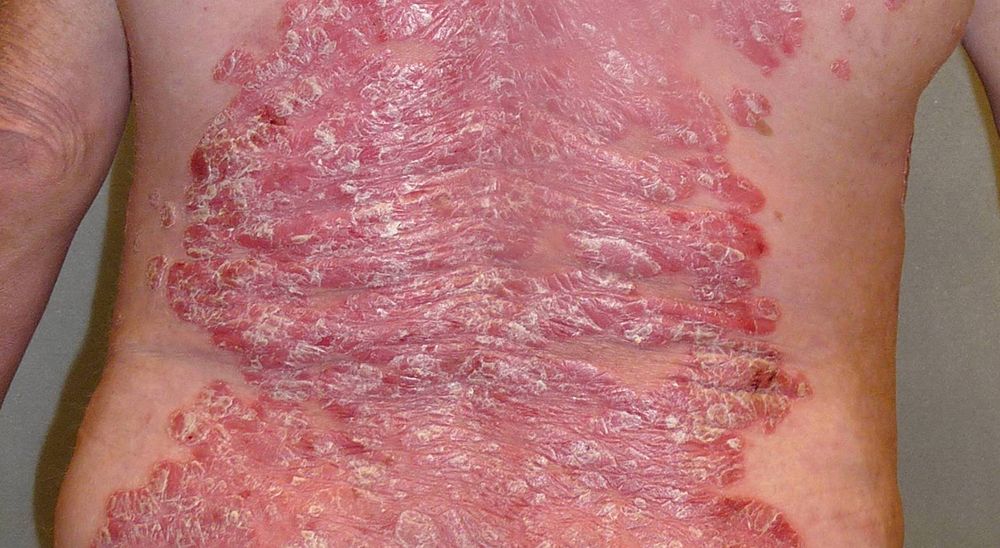Cutaneous Eruption in Metastatic HCC Patient Treated With Sorafenib
A 57-year-old woman developed a solitary nodular hepatocellular carcinoma associated with chronic alcohol abuse and cirrhosis. She began to receive sorafenib (Nexavar) (400 mg twice daily) for the management of advanced disease when several small pulmonary metastases appeared some 5 months postoperatively. About 3 months after drug initiation, the patient experienced the explosive onset of a moderately pruritic cutaneous eruption involving the anterior and posterior trunk, extensor surfaces of the arms, and the scalp. Mucous membranes were uninvolved, and the patient was afebrile. She denied previous diagnosis of a skin disorder, although she had noted mild to moderate scalp flaking and "dry skin" on the elbows for several decades. Family history was positive for psoriasis (mother and maternal aunt). The remainder of the review of systems, medical history, and social history were unremarkable or not pertinent.

What is your diagnosis?